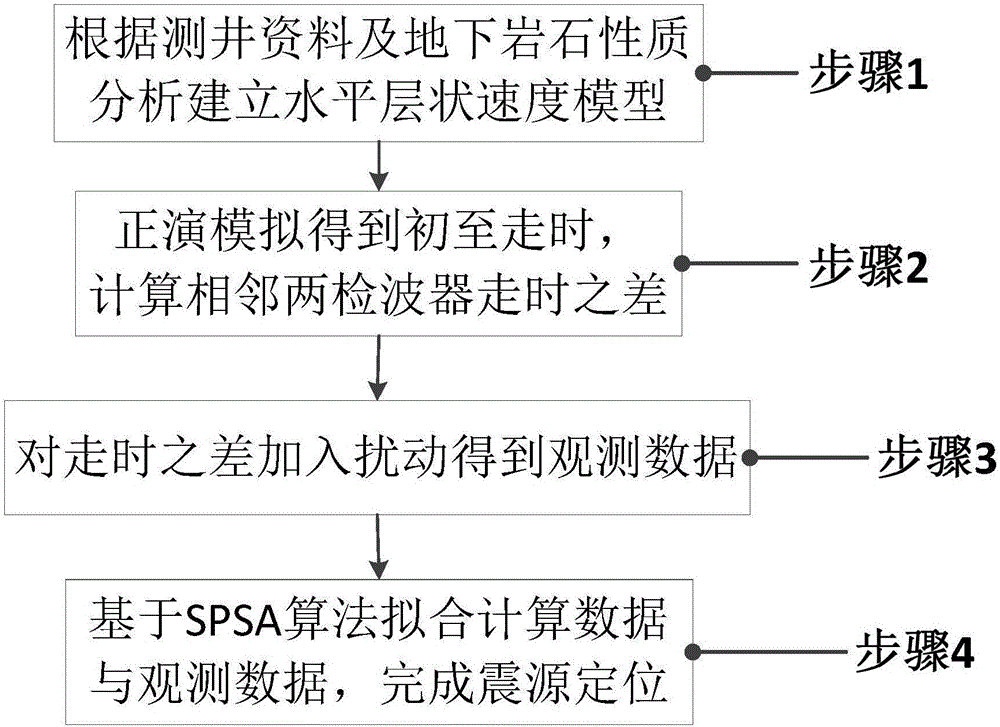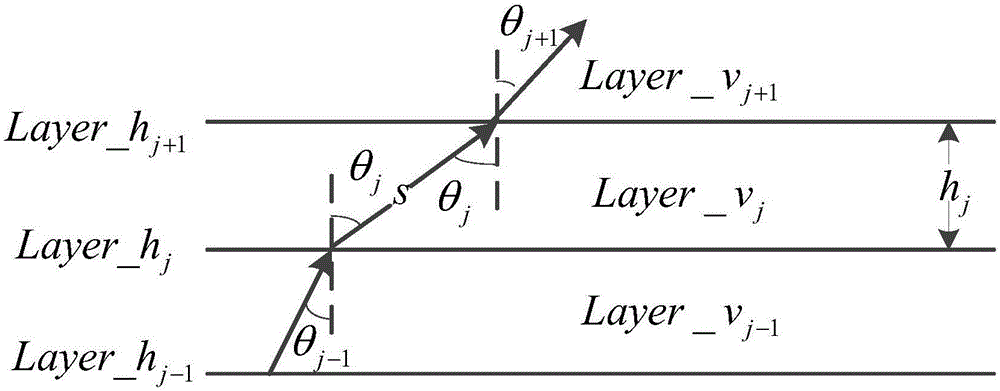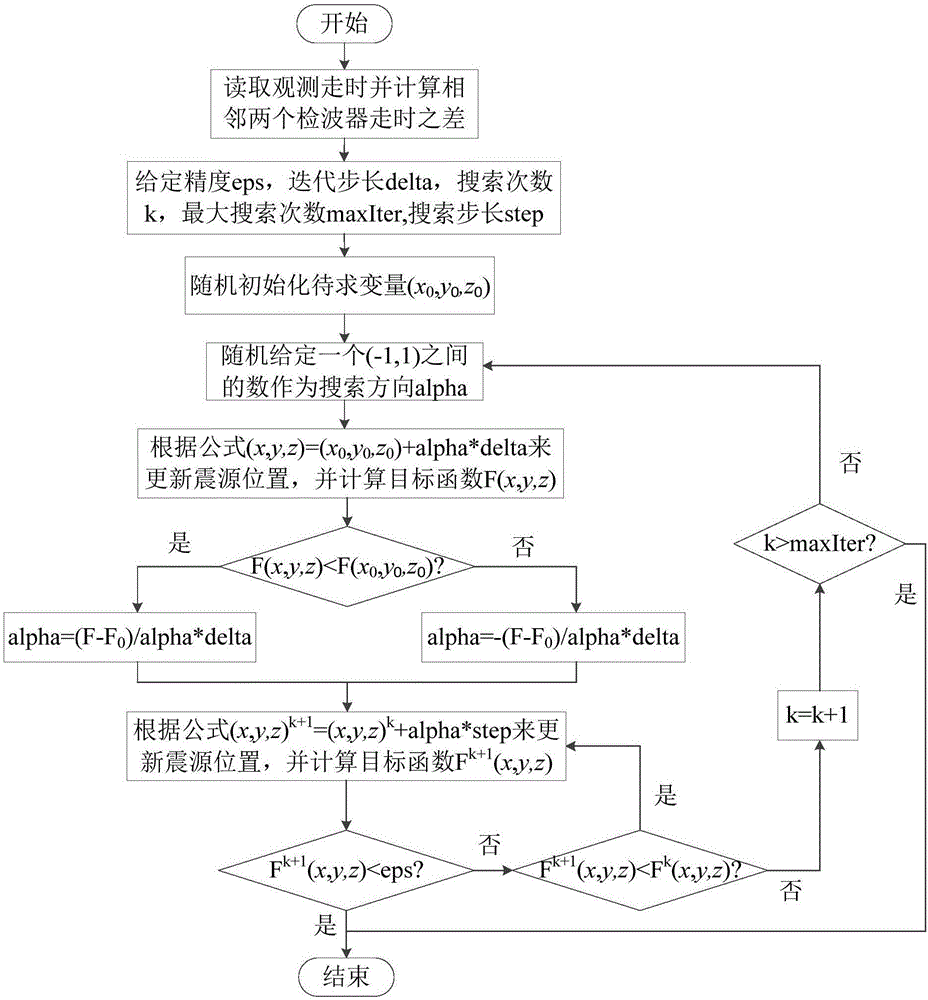Seismic source inversion method based on micro seismic data and SPSA optimization algorithm
An optimization algorithm and micro-seismic technology, which is applied in the fields of seismology, seismology, and seismic signal processing for well logging records. It can solve the problem that the positioning accuracy cannot meet the requirements, the speed of algorithm solution is slow, and the initial value selection is highly dependent. and other problems, to achieve fast and accurate source location, reduce interference, and fast calculation speed
- Summary
- Abstract
- Description
- Claims
- Application Information
AI Technical Summary
Problems solved by technology
Method used
Image
Examples
Embodiment
[0096] Based on step 1, a horizontal layered velocity model is established based on well logging data and analysis of underground rock properties: In this calculation example, an area with a length of 400 meters, a width of 400 meters, and a height of 400 meters is selected. They are numbered sequentially from shallow to shallow, and the medium interface is a horizontal plane. The depth of each layer from the ground is Layer_h=[2100 2150 2300 2400]m, and the P wave (longitudinal wave) velocity of the layer interface is Layer_v=[1600 2000 2400] from shallow to deep. 2800] m / s.
[0097] Based on the second step, forward modeling is carried out for a given microseismic event, and the first arrival travel time is calculated, and then the travel time difference between two adjacent geophones is calculated:
[0098] Set the detector parameters as shown in Table 1 below:
[0099] Table 1 Geophone parameters
[0100] series 1 2 3 4 5 6 7 8 9 10 11 12 X 0 ...
PUM
 Login to View More
Login to View More Abstract
Description
Claims
Application Information
 Login to View More
Login to View More - R&D
- Intellectual Property
- Life Sciences
- Materials
- Tech Scout
- Unparalleled Data Quality
- Higher Quality Content
- 60% Fewer Hallucinations
Browse by: Latest US Patents, China's latest patents, Technical Efficacy Thesaurus, Application Domain, Technology Topic, Popular Technical Reports.
© 2025 PatSnap. All rights reserved.Legal|Privacy policy|Modern Slavery Act Transparency Statement|Sitemap|About US| Contact US: help@patsnap.com



